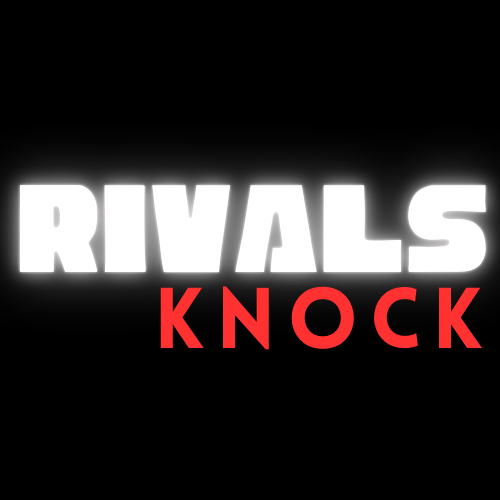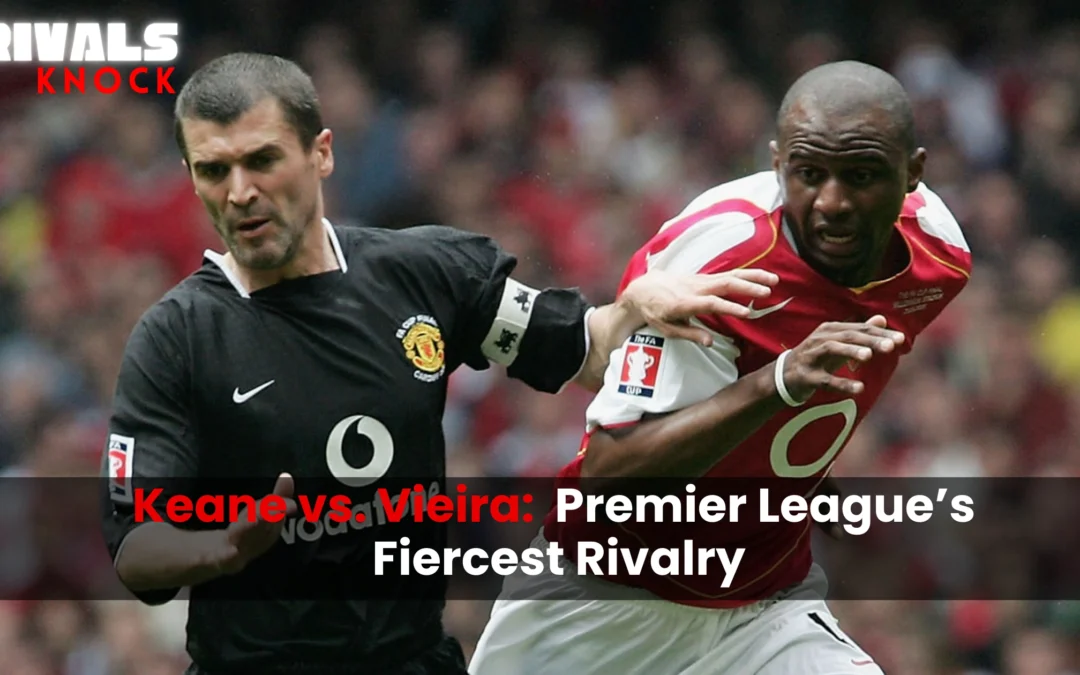The Premier League has seen its share of fiery rivalries, but none have burned as brightly as the clash between Roy Keane and Patrick Vieira. As captains of Manchester United and Arsenal during the late 1990s and early 2000s, their battles defined an era when the two clubs dominated English football. let’s take a step back to explore how Keane and Vieira’s rivalry shaped the Premier League—and why it still resonates today.
The Heart of a Historic Rivalry
From 1996 to 2004, Manchester United and Arsenal shared the Premier League title every season, a period marked by intense competition under managers Sir Alex Ferguson and Arsène Wenger. Keane, the relentless Irish midfielder, was the heartbeat of United’s 1999 Treble-winning side, while Vieira, the towering Frenchman, led Arsenal to the 2003-04 Invincibles season. Their head-to-head record in the Premier League tells a story of fine margins: across 12 encounters, Keane’s United won four, Vieira’s Arsenal took three, and five ended in draws.
Their rivalry wasn’t just about trophies—it was personal. Keane once described his feelings toward Arsenal as “hatred,” while Vieira called Keane his “favorite enemy,” admitting he loved every aspect of his game. This mutual respect, born from fierce competition, was evident in their 19 meetings across all competitions, with Keane edging out Vieira with eight wins to six. Yet, their clashes often transcended the pitch, spilling into moments of raw emotion that became Premier League folklore.
The Highbury Tunnel Clash: A Defining Moment
The most iconic moment of their rivalry came on February 1, 2005, at Highbury—Arsenal’s former stadium. Before the match even started, tensions erupted in the tunnel. Vieira, incensed by what he saw as Gary Neville’s rough treatment of Arsenal players in previous games, confronted Neville, shouting, “You’re not going to kick our players out on this pitch today.” Keane, fiercely protective of his teammate, stepped in, famously snarling, “I’ll see you out there.” The exchange, which saw Vieira squirt a water bottle at Keane, set the tone for a chaotic match. Manchester United went on to win 4-2, with Cristiano Ronaldo scoring twice, but the tunnel incident overshadowed the game itself. Vieira later admitted he planned the confrontation to send a message, revealing the calculated intensity behind their rivalry.
This wasn’t an isolated incident. In 1999, during a 1-1 draw at Highbury, the two clashed over a loose ball, both leaving a mark on the other in a match that boiled over into a mass confrontation. Their battles were often physical—Keane was sent off in the 1999 FA Cup semi-final replay for two bookings, while Vieira’s errant pass in the same game led to Ryan Giggs’ iconic solo goal. Vieira also saw red in the 2003 “Battle of Old Trafford,” a 0-0 draw where Arsenal’s late defiance, after Ruud van Nistelrooy’s penalty miss, fueled their unbeaten season.
On the Pitch: A Clash of Styles and Leadership
Keane and Vieira were more than just enforcers—they were complete midfielders. Keane, at 5’10” and slight, relied on ferocious tenacity, technical ability, and game intelligence to dominate. He was United’s driving force, dragging them to the 1999 Champions League final with a masterclass against Juventus. Vieira, taller and more physically imposing, combined technical brilliance with defensive steel, often breaking opposition lines with his dribbling. His role in Arsenal’s 2004 unbeaten season was pivotal, culminating in him scoring the decisive penalty in the 2005 FA Cup final—their last meeting as players.
Their leadership styles mirrored their teams. Keane was the embodiment of Ferguson’s relentless winning mentality, unafraid to confront teammates or opponents alike. Vieira, under Wenger’s more measured approach, was a quieter leader but no less fierce, often letting his play do the talking. Yet, both shared a fairness in their aggression—Vieira once noted that Keane would take a kick without complaint, only to return it in kind, a trait he respected.
Beyond the Pitch: A Lasting Legacy
Their rivalry ended in 2005 when Vieira joined Juventus in August, followed by Keane’s departure from United in November. The Premier League felt their absence—Arsenal haven’t won the title since Vieira left, while United continued their success, though Keane’s exit marked the end of an era. Both players have since reflected on their battles with admiration. In a 2013 documentary, Keane and Vieira: Best of Enemies, they shared laughs over their past, with Vieira calling Keane a “leader” and “winner,” and Keane admitting Vieira was “tough.” This thawing of tensions, which began with a shared ice cream in Warsaw during the 2012 Euros, showed the depth of their mutual respect.
Yet, their competitive edge remains. In a 2024 podcast, Vieira reignited the rivalry with a jab at Keane’s infamous 2002 World Cup walkout in Saipan, saying, “I never walked out of a tournament,” to which Keane smirked, citing injuries that limited his 67 caps compared to Vieira’s 107. Keane has also admitted that while Vieira was a formidable opponent, he found Zinedine Zidane tougher to face, a rare nod to someone outside their rivalry.
A Critical Look: More Than Just Aggression
The establishment narrative often paints Keane and Vieira as mere aggressors, but this oversimplifies their impact. Both were technically gifted—Keane’s passing and game control were elite, while Vieira’s ability to glide past defenders was unmatched for a player of his size. The focus on their physical battles ignores how they elevated their teams. Arsenal’s struggles post-Vieira suggest he was irreplaceable, while United’s continued success after Keane shows the depth Ferguson built—but Keane’s leadership was the foundation of their 1990s dominance.
Their rivalry also challenges the modern game’s sanitized image. Today’s Premier League, with its emphasis on technical flair over physicality, lacks the raw intensity Keane and Vieira brought. Some argue this is progress, but others, including fans on platforms like X, lament the absence of such rivalries, with posts often citing their clashes as the pinnacle of Premier League drama. Critics might say their aggression crossed lines—Keane’s tackle on Alf-Inge Haaland in 2001, for instance, was widely condemned—but it was part of an era where passion often trumped decorum.
Why It Still Matters
Keane and Vieira’s rivalry wasn’t just about two players—it encapsulated the Manchester United-Arsenal feud, a battle for supremacy that defined the Premier League’s golden era. As we reflect on the recent Europa League final, where United fell short against Tottenham, fans might wonder if a player like Keane could have made the difference in those clutch moments. Vieira, now a coach, and Keane, a pundit, continue to influence football, but their on-pitch legacy remains unmatched.
What do you think—could today’s Premier League handle a rivalry like Keane and Vieira’s? Who would you back in their prime? Share your thoughts on X with #KeaneVsVieira, and let’s keep the debate alive! Stay tuned to Rivals Knock for more throwbacks and modern football insights.

